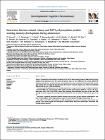Interaction between striatal volume and DAT1 polymorphism predicts working memory development during adolescence
| dc.contributor.author | Bokde, Arun | |
| dc.contributor.author | Nemmi, Federico | |
| dc.contributor.author | Nymberg, Charlotte | |
| dc.contributor.author | Darki, Fahimehh | |
| dc.contributor.author | Banaschewski, Tobias J. | |
| dc.contributor.author | Büchel, Christian | |
| dc.contributor.author | Flor, Herta | |
| dc.contributor.author | Frouin, Vincent | |
| dc.contributor.author | Garavan, Hugh P. | |
| dc.contributor.author | Gowland, Penny | |
| dc.contributor.author | Heinz, Andreas | |
| dc.contributor.author | Martinot, Jean-Luc | |
| dc.contributor.author | Nees, Frauke | |
| dc.contributor.author | Paul, Tomas | |
| dc.contributor.author | Smolka, Michael N. | |
| dc.contributor.author | Robbins, Trevor W. | |
| dc.contributor.author | Schumann, Gunter | |
| dc.contributor.author | Klingberg, Torkel | |
| dc.contributor.author | the IMAGEN consortium | |
| dc.date.accessioned | 2020-03-04T15:59:26Z | |
| dc.date.available | 2020-03-04T15:59:26Z | |
| dc.date.issued | 2018 | |
| dc.date.submitted | 2018 | en |
| dc.identifier.citation | Nemmi, F., Nymberg, C., Darki, F., Banaschewski, T., Bokde, A.L.W., Büchel, C. , Flor, H., Frouin, V., Garavan, H., Gowland, P., Heinz, A., Martinot, J.-L., Nees, F., Paus, T., Smolka, M.N., Robbins, T.W., Schumann, G. & Klingberg, T., Interaction between striatal volume and DAT1 polymorphism predicts working memory development during adolescence, Developmental Cognitive Neuroscience, 30, 2018, 191-199 | en |
| dc.identifier.other | Y | |
| dc.identifier.uri | https://www.sciencedirect.com/science/article/pii/S1878929317301536?via%3Dihub#! | |
| dc.identifier.uri | http://hdl.handle.net/2262/91694 | |
| dc.description.abstract | There is considerable inter-individual variability in the rate at which working memory (WM) develops during childhood and adolescence, but the neural and genetic basis for these differences are poorly understood. Dopamine-related genes, striatal activation and morphology have been associated with increased WM capacity after training. Here we tested the hypothesis that these factors would also explain some of the inter-individual differences in the rate of WM development. We measured WM performance in 487 healthy subjects twice: at age 14 and 19. At age 14 subjects underwent a structural MRI scan, and genotyping of five single nucleotide polymorphisms (SNPs) in or close to the dopamine genes DRD2, DAT-1 and COMT, which have previously been associated with gains in WM after WM training. We then analyzed which biological factors predicted the rate of increase in WM between ages 14 and 19. We found a significant interaction between putamen size and DAT1/SLC6A3 rs40184 polymorphism, such that TC heterozygotes with a larger putamen at age 14 showed greater WM improvement at age 19. The effect of the DAT1 polymorphism on WM development was exerted in interaction with striatal morphology. These results suggest that development of WM partially share neuro-physiological mechanism with training-induced plasticity. | en |
| dc.format.extent | 191-199 | en |
| dc.language.iso | en | en |
| dc.relation.ispartofseries | Developmental Cognitive Neuroscience; | |
| dc.relation.ispartofseries | 30; | |
| dc.rights | Y | en |
| dc.subject | Working memory | en |
| dc.subject | Development | en |
| dc.subject | Dopamine | en |
| dc.subject | Striatum | en |
| dc.subject | DAT-1 | en |
| dc.subject | rs40184 | en |
| dc.title | Interaction between striatal volume and DAT1 polymorphism predicts working memory development during adolescence | en |
| dc.type | Journal Article | en |
| dc.contributor.sponsor | Science Foundation Ireland (SFI) | en |
| dc.type.supercollection | scholarly_publications | en |
| dc.type.supercollection | refereed_publications | en |
| dc.identifier.peoplefinderurl | http://people.tcd.ie/bokdea | |
| dc.identifier.rssinternalid | 186840 | |
| dc.identifier.doi | http://dx.doi.org/10.1016/j.dcn.2018.03.006 | |
| dc.rights.ecaccessrights | openAccess | |
| dc.contributor.sponsorGrantNumber | 16/ERCD/3797 | en |
| dc.identifier.orcid_id | 0000-0003-0114-4914 |
Files in this item
This item appears in the following Collection(s)
-
Administrative Staff Authors (Scholarly Publications)
Administrative Staff Authors (Scholarly Publications)




